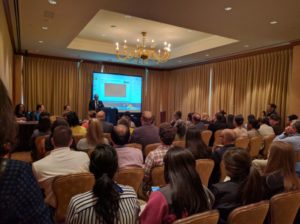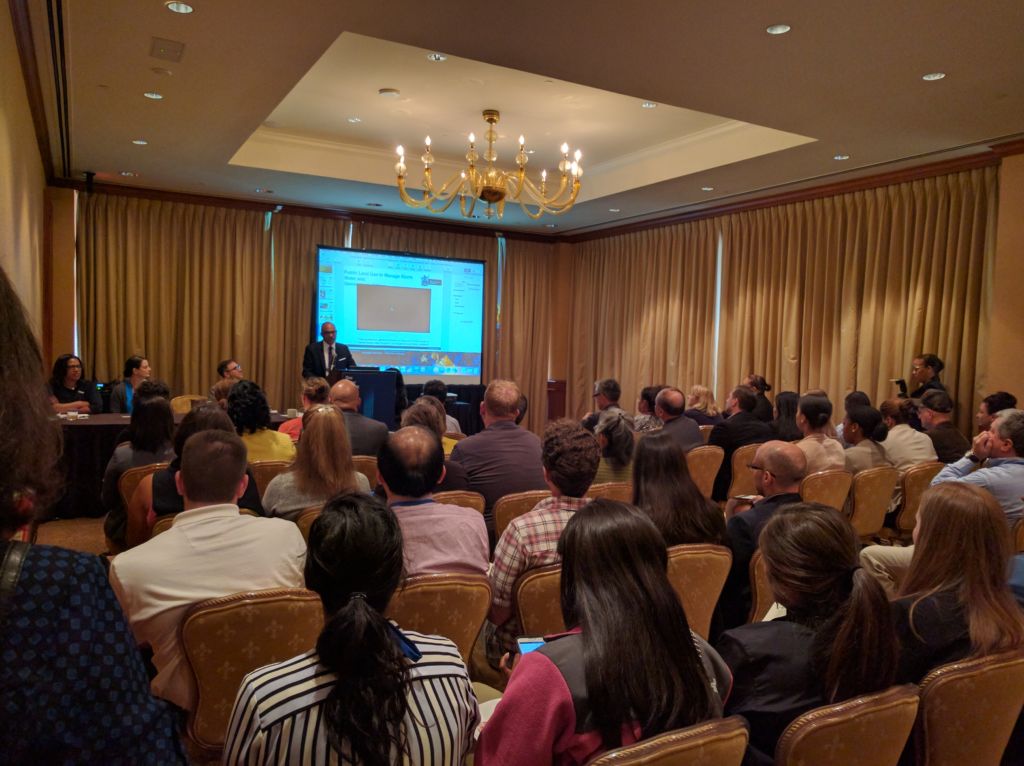One Water Summit 2017
On June 27-29, I attended the 2017 One Water Summit in New Orleans, LA. Like River Rally, the Summit is held every year in a different water city. Local projects and partnerships are highlighted throughout the conference, from a series of outdoor green infrastructure tours and field trips on the first day, to a panel of local experts during the local plenary, to local musicians rounding out the closing session.
Presented by the U.S. Water Alliance, the One Water Summit is a conference that seeks to bring people from all over the country, from a variety of professions, to exchange knowledge and develop strategies for achieving “a sustainable water future for all” — that is, a future where everyone has access to sufficient quantities of clean water and where water management practices are tied to healthy and thriving ecosystems, communities, and economies.

The webinars were well attended, with some of the rooms packed beyond capacity. This workshop was called The Maturation of Multi-Benefit Green Infrastructure Strategies.
The One Water Movement
The one water movement is “an approach to water stewardship that is innovative, inclusive, and integrated”. This approach “proactively advances policies and programs that manage water resources to advance a better quality of life for everyone.” The U.S. Water Alliance seeks to achieve this goal through 1) education and advocacy through campaigns, media and events; 2) adoption of holistic “one water” policies and management programs that “advance a better quality of life for all”; and 3) celebration of innovation in best practices, community development, storytelling, and more. The U.S. Water Alliance has published a free downloadable guide called One Water Roadmap: The Sustainable Management of Life’s Most Essential Resource, which compiles some of the best research, management practices, and policies to date, and argues for a watershed- and systems-based approach that leverages long-term regional partnerships between upstream and downstream communities.
Central to this idea is coalition-building between a wide variety of interests from various geographic areas and professions, including public officials, businesses, NGOs, scientists and researchers, and public utilities. To that end, the 2017 Summit saw the participation of twenty-five delegations — including The American Planning Association, American Rivers, The Conservation Fund, The Emerald Cities Collaborative, The Great Lakes Commission, Great Lakes Community Partners, The Greater New Orleans Foundation, The Sewerage and Water Board of New Orleans, The Mayors Innovation Project, and The Nature Conservancy; plus regional delegations from Atlanta, Austin, DC-Virginia, Hawaii, Iowa, Kansas City, Los Angeles, Minnesota, New Jersey, Northeast Ohio, the Pacific Northwest, Raleigh-Durham, San Francisco Bay Area, Tucson, and Wisconsin. Each delegation sent several representatives from a range of collaborating NGOs, utilities, corporations, and more.
Through presentations and workshops, water professionals from these organizations and regions shared ideas, practices, and experiences on issues ranging from multi-benefit green infrastructure projects, to investment strategies and entrepreneurship, to re-use and conservation, to addressing water shortages and lack of running water in disenfranchised communities.
Some Takeaways
The main topics I explored at the Summit included the “One Water” vision, community-based equitable water management, public and private investment strategies, collaboration between upstream and downstream communities, and the role of sustainable agriculture. This is far too much material to cover in just one blog post, so future posts will incorporate a lot of the information and contacts I came across at the Summit. For now, here are some interesting insights from Summit presenters:
- It is imperative for large- and small-scale agriculture to be involved in the regional planning of watershed management. In the past, there has been an atmosphere of distrust between “downstream” communities, which are often understood to be more urban, and “upstream” or agricultural communities. If watershed management is to be effective, it will be necessary for these communities to move past assumptions and partner around shared goals. This means building a cultural framework that allows for this kind of communication and trade of knowledge and commerce.
- In the process of building innovative partnerships between people with sometimes disparate experiences and interests, it is important to expect conflict along the way. Those involved need to make a commitment at the beginning to work through these conflicts in order to achieve their vision.
- Communities can take ownership of their own destinies by documenting their experiences and gathering data, such as population statistics, participatory action research, water quality testing, and community mapping. Producing data-driven arguments and results will cause city officials, agencies and others to take notice, and is important for connecting the dots between various interests and developing widely beneficial solutions.
For more information on the One Water vision, please check out the One Water Roadmap, the Equitable Water Future National Briefing Paper, and the U.S. Water Alliance website.

